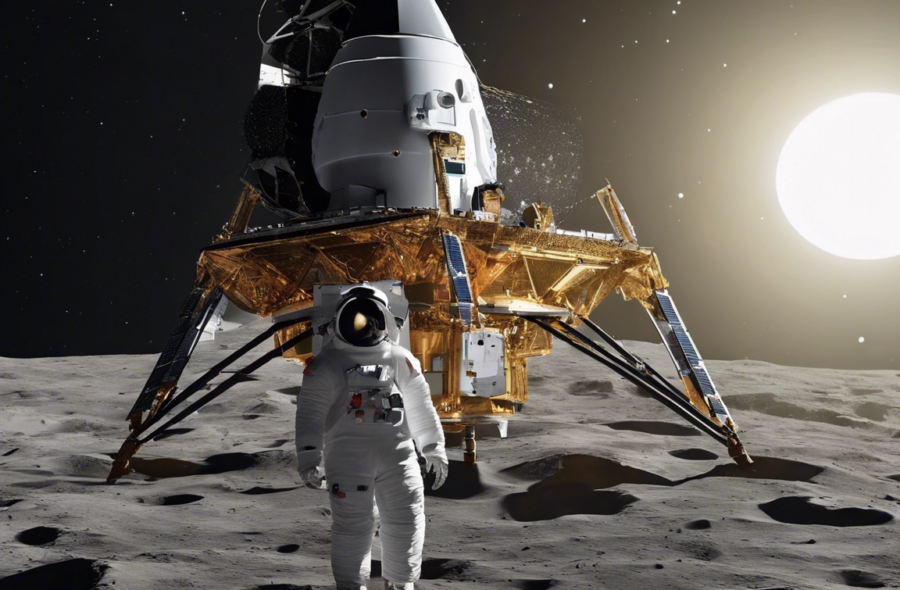India’s ambitious space missions have garnered international attention over the years, with the Chandrayaan series being a standout among them. Chandrayaan 1 and Chandrayaan 2 were groundbreaking missions that achieved significant milestones in lunar exploration. As the Indian Space Research Organisation (ISRO) gears up for the launch of Chandrayaan 3, there is considerable interest in the budget allocated for this mission.
Chandrayaan 3 Mission Overview
Chandrayaan 3 is the third lunar exploration mission planned by ISRO. Following the partial success of Chandrayaan 2, which witnessed the successful landing of the orbiter but a failed attempt at landing the Vikram lander on the lunar surface, Chandrayaan 3 aims to build upon the learnings from its predecessor and achieve a successful soft landing on the Moon. The mission consists of an orbiter, a lander, and a rover, with a primary focus on demonstrating ISRO’s capability to land on the lunar surface.
Allocation of Budget for Chandrayaan 3
The budget allocated for space missions is a critical aspect that determines the scope and success of the mission. While the exact budget for Chandrayaan 3 has not been publicly disclosed by ISRO, it is expected to be in line with the budget allocated for Chandrayaan 2, which was approximately Rs. 978 crore ($141 million). This budget encompasses the entire mission lifecycle, including research and development, mission planning, spacecraft development, launch vehicle costs, ground infrastructure, and mission operations.
Key Components of the Budget
-
Research and Development: A significant portion of the budget is allocated towards research and development activities, including technology development, payload integration, and testing of the spacecraft components.
-
Mission Planning: Planning a complex mission like Chandrayaan 3 involves meticulous planning and simulation exercises, which require a dedicated budget allocation.
-
Spacecraft Development: The design, development, and testing of the orbiter, lander, and rover systems account for a substantial portion of the budget.
-
Launch Vehicle Costs: Securing a suitable launch vehicle, such as the GSLV Mk III, entails costs related to integration, fueling, and launch pad operations.
-
Ground Infrastructure: Establishing and maintaining ground stations, tracking networks, and communication facilities are essential components supported by the budget.
-
Mission Operations: Once the mission is launched, ongoing operations including telemetry, tracking, and command functions are supported by the allocated budget.
Cost Optimization Strategies
ISRO has a reputation for achieving remarkable outcomes with limited budget constraints. To optimize costs for Chandrayaan 3, ISRO may employ the following strategies:
- Reusable Technologies: Leveraging reusable technologies and components can significantly reduce development and operational costs for future missions.
- Collaborations: Partnering with international space agencies for shared resources and expertise can help in cost-sharing and technology exchange.
- Risk Management: Identifying and mitigating risks early in the mission lifecycle can prevent costly delays and revisions.
- Indigenous Development: Emphasizing indigenous technology development reduces dependency on external vendors and minimizes costs in the long run.
Potential Impact of the Budget on Chandrayaan 3’s Success
The budget allocated for Chandrayaan 3 plays a crucial role in determining the mission’s success and objectives. Adequate funding ensures that ISRO can implement robust quality control measures, deploy advanced technologies, and maintain mission resilience in the face of unforeseen challenges. A well-structured budget empowers ISRO to innovate, optimize resource utilization, and achieve the mission goals efficiently.
Frequently Asked Questions (FAQs) about Chandrayaan 3
-
Q: What is the estimated launch date for Chandrayaan 3?
A: The launch date for Chandrayaan 3 has not been officially announced yet, but it is expected to take place in the near future. -
Q: How does the budget for Chandrayaan 3 compare to other lunar missions globally?
A: The budget for Chandrayaan 3 is relatively economical compared to other lunar missions, showcasing ISRO’s cost-effective approach to space exploration. -
Q: Will Chandrayaan 3 have any international collaboration for this mission?
A: While ISRO has not disclosed any specific international collaborations for Chandrayaan 3, they have a history of successful partnerships with various space agencies. -
Q: What are the primary scientific goals of Chandrayaan 3?
A: Chandrayaan 3 aims to demonstrate India’s capability to achieve a successful soft landing on the Moon and conduct scientific experiments on the lunar surface. -
Q: How does the budget allocation for Chandrayaan 3 reflect ISRO’s long-term space exploration strategy?
A: The budget allocation for Chandrayaan 3 is a testament to ISRO’s commitment to advancing space exploration while maintaining cost-efficiency and technological innovation.
In conclusion, the budget allocated for Chandrayaan 3 is a critical factor that influences the mission’s scope, capabilities, and overall success. ISRO’s track record of accomplishing remarkable feats within constrained budgets instills confidence in the potential outcomes of Chandrayaan 3. By judiciously managing resources, fostering innovation, and prioritizing mission objectives, ISRO continues to push the boundaries of space exploration with Chandrayaan 3.

